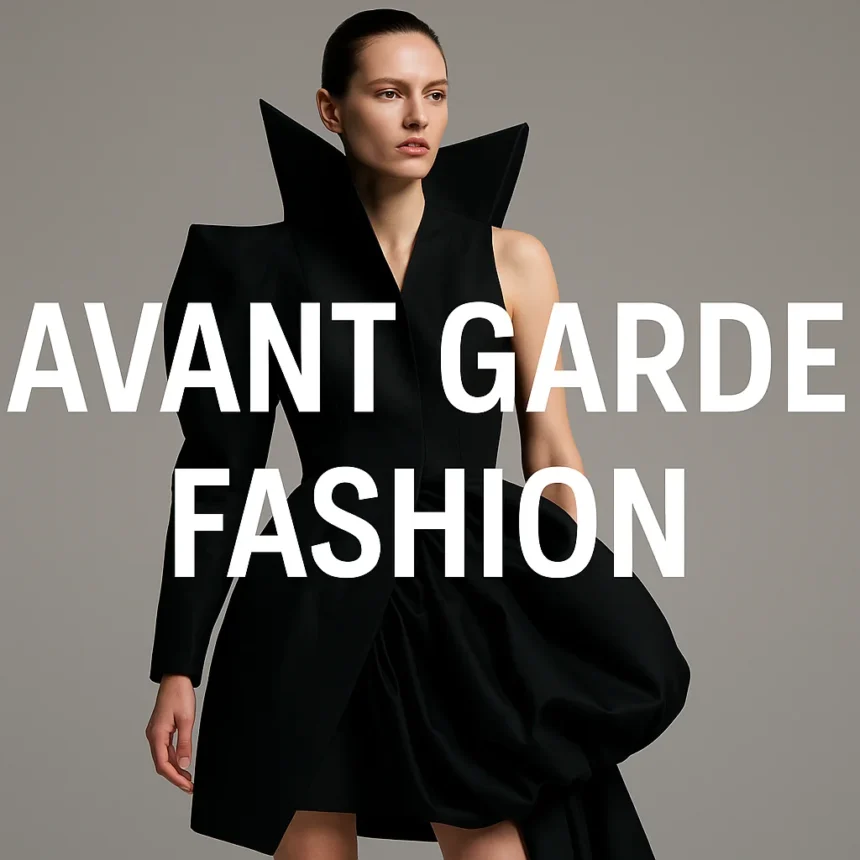Introduction
Avant garde fashion is often described as boundary-breaking, experimental, and daring. It challenges conventions, rethinks silhouettes, and invites us to see clothing as art. In this article, we’ll explore the origins, evolution, and modern relevance of avant garde fashion and offer insight for fashion-forward readers curious about this bold aesthetic.
What Is Avant Garde Fashion?
Origins and Definition
The term avant garde comes from the French, literally meaning vanguard or advance guard. In fashion, it refers to designs that push the envelope rejecting mainstream trends in favour of innovation, abstraction, and provocative forms. Unlike commercial or ready-to-wear lines, avant garde fashion is often about concept over wearability.
Key Characteristics
Some hallmarks include:
- Unusual silhouettes — asymmetry, exaggerated shapes, deconstruction
- Experimental materials — metal, plastic, 3D-printed fabrics, unconventional textiles
- Conceptual or artistic narrative — expressing ideas about identity, technology, society
- High theatricality — pieces may be closer to wearable sculpture
When we talk about avant garde fashion, we speak of garments not merely as clothes, but as statements, often meant to provoke or inspire contemplation.
A Brief History of Avant Garde Fashion
Early 20th Century Roots
The avant garde impulse in fashion began alongside modern art movements. In the early 1900s, designers like Paul Poiret broke free from corsets, while Dadaism and surrealism influenced costume and wearable art.
Post-War and Mid-Century Experiments
- In the 1960s and 70s, designers such as Pierre Cardin and André Courrèges embraced futuristic shapes.
- In Japan, the 1980s saw designers like Rei Kawakubo (Founding Comme des Garçons) and Yohji Yamamoto introducing radical notions of volume, deconstruction, and negative space.
- The 1990s and early 2000s saw Alexander McQueen, Hussein Chalayan, and Issey Miyake pushing boundaries with narrative-driven runway shows.
Contemporary Avant Garde
Today, avant garde fashion thrives in haute couture houses, experimental labels, and art-fashion hybrids. Designers like Iris van Herpen blend technology and biomorphic forms; others merge digital design tools, responsive fabrics, and performance. The avant garde continues to evolve as technology and culture change.

Why Avant Garde Fashion Matters
Innovation & Influence
Avant garde pieces often act as laboratories for new ideas in silhouette, construction, materials, and technique. In much the same way as economic development depends on innovation and experimentation, these creative risks advance the entire fashion ecosystem. Trends that begin in avant garde can filter into commercial fashion: think structured shoulders, asymmetry, or mixed media textures.
Cultural Commentary
Many designers use this fashion as a lens to comment on society on identity, gender, environment, or digital life. The clothing becomes a conversation starter, not just a product.
Brand Differentiation
For high fashion houses, creating avant garde collections helps reinforce a brand’s vision, credibility, and visibility. These pieces often garner media attention, showmanship, and brand prestige.
How Avant Garde Fashion Manifests: Examples & Styles
Sculptural & Architectural Dresses

Designers create pieces that appear more sculpture than clothing. For instance, in Iris van Herpen’s collections, garments may mimic organic, fluid structures or insect-like wings, fusing technology and form.
Deconstructed & Reconstructed Garments

Some avant garde fashion plays with visible seams, unfinished edges, torn fabrics, layering in fragmented forms deliberately disrupting the notion of garment completeness.
Futuristic Materials & Tech Integration
You’ll see experimental materials transparent plastics, LEDs, reactive fabrics, 3D-printed elements used not just for novelty, but to explore new modes of expression.
Avant Garde in Street Style
Though dramatic runway looks may not be streetable, elements of weird proportions, statement layers, or asymmetry can enter urban wardrobes. Think of an exaggerated sleeve, an oddly layered coat, or contrasting textures.
How to Appreciate and Wear Avant Garde Fashion

As a Spectator
Those exploring which personality type learns the quickest might find avant garde fashion especially engaging it rewards curiosity and intuition.
- Visit fashion exhibitions and runway shows (physical or virtual).
- Read interviews and designer process stories to understand conceptual underpinnings.
- Compare avant garde work across disciplines (fashion, architecture, sculpture).
As a Wearer
- Start small: integrate one avant garde detail (an asymmetric jacket, sculptural accessory).
- Balance with basics: let one radical piece anchor the ensemble while others remain neutral.
- Consider context: some avant garde looks suit editorial shoots or events more than everyday.
- Be intentional: when wearing a daring piece, own it confidence and attitude matter.
Challenges & Criticisms
Avant garde fashion isn’t without controversies:
- Wearability: Many pieces aren’t practical for everyday life. Just as matching learning styles to personality types helps us understand human diversity, fashion appreciation depends on how individuals interpret design and meaning.
- Cost: The craftsmanship, novelty materials, and conceptual development often command high prices.
- Accessibility: Avant garde may remain confined to high fashion elites, with limited reach.
- Overemphasis on shock value: Sometimes, pushing the boundary becomes gimmicky rather than meaningful.
However, its role as an engine of innovation remains central in fashion discourse.
The Future of Avant Garde Fashion
Looking ahead, avant garde fashion may increasingly intersect with sustainable luxury fashion. Biodegradable or bio-fabricated materials, responsive textiles, AI-assisted design, and augmented reality garments could redefine what avant garde means. The fashion vanguard is never static it evolves with cultural, material, and technical shifts.
Summary
Avant garde fashion encompasses bold, experimental, and conceptual design that challenges norms. While its extremes may not enter everyday closets, its influence percolates into mainstream style, shaping future trends, and giving fashion its most daring edge. Initiatives in youth education and design mentorship are nurturing the next wave of avant garde thinkers and creators.




